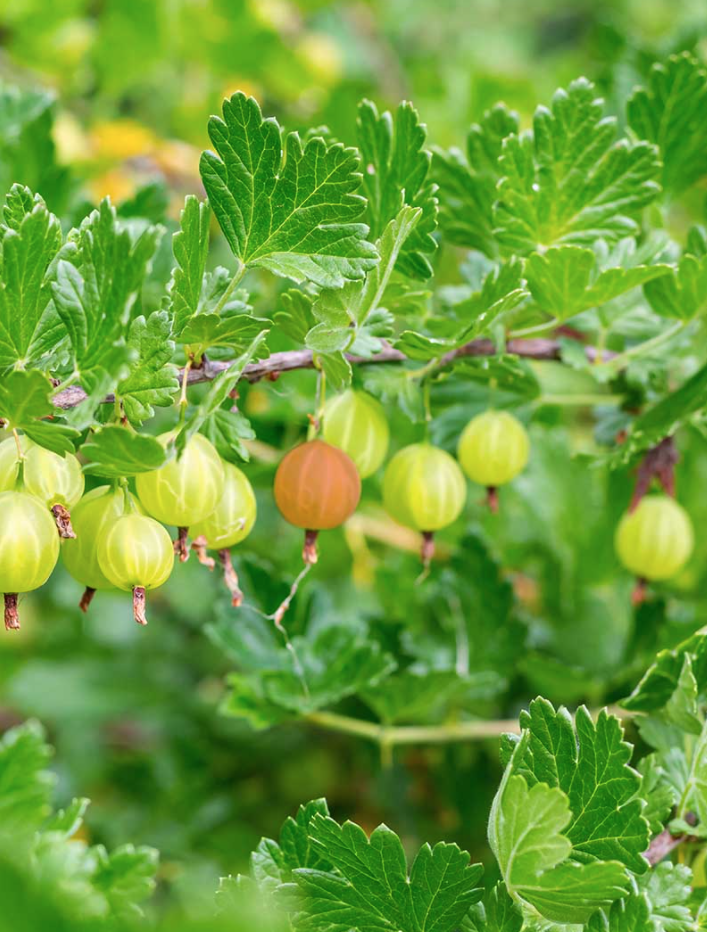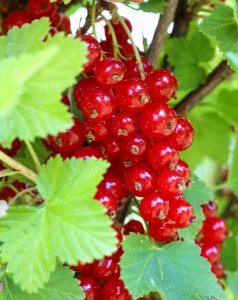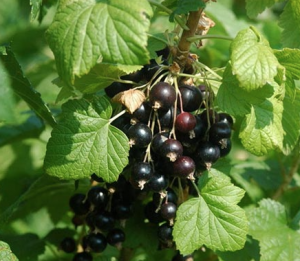
Ripe Gooseberries can be Green, Red, Purple, Pink even Yellow.
A century can make a lot of difference.
In 1911 the federal government banned Gooseberry production because they were the intermediary host for the white pine blister. It’s a disease that kills pine trees. As you can imagine in the Pine Tree State of Maine Gooseberries were more than banned. They were sought out and destroyed… but not all of them.
My mother had the habit of collecting horses (five at one time.) We rode everywhere and that included long-abandoned roads through large expanses of woods. They were they type of road a horse could pick their way through but rocks and ledges would hang up a vehicle’s undercarriage. In the early 60’s on one such road a caved-in farm house had gooseberries and their relative, currents, still growing next to the foundation. It was the first time I had seen them and they probably escaped eradication because of the remote location. (Carrying out that destruction incidentally were the Boy Scouts, the Civilian Conservation Corps, and the Work Project Administration.)

You can see the family resemblance with Red Currants
In 1966 the banning of gooseberry fell to individual states and now in more places than not a century-plus later you can plant them again. According to the University of Massachusetts Delaware, New Jersey and North Carolina prohibit importing and raising of all currants and gooseberries. Massachusetts, Maine, Michigan, New Hampshire, New York, Rhode Island, and Vermont allow planting in certain areas of certain varieties. There are Black, Red and White Currents besides gooseberries and the restrictions vary from variety to variety, city to city and state to state. I suspect gooseberries and currants are still growing in the wilds (though people might not admit they know where they are.) There are also farms now where you can pick them from Rhode Island to Washington State.
Gooseberries fall into two groups, North American (R. hirtellum) and northern European (Ribes grossularia var. uva-crispa) They like cool, humid climates such as the coast of Maine, points north, and the tops of mountains to the south. Merritt Fernald, who was the big botanist at Harvard from about 1900 to 1950, wrote about them as growing extensively in New England, Newfoundland, Labrador and as far west as Manitoba.

Black Currants still are on almost everyone’s hit list.
The fruit itself can be purple, red, pink, yellow, and green. Red and green are the most common ones — the ones I recall were green — and while you can eat them raw they are better cooked. They’re high in potassium. As for the names Ribes (REE-bess) is from the Arabic Ribas which means “rhubard.” The fruit can be sour. Hirtellum (her-TELL-um) is a little hairy (the fruit.) Grossularia (gross-ul-LAIR-ree-uh) is from the French for Gooseberry, Gorseille a’ Maquereau (meaning mackerel berries because they were used for a sauce on those fish.) Uva-crispa (OOU-vah CRIS-pah) means curved grape.
Green Deane’s “Itemized” Plant Profile
IDENTIFICATION: A very spiny branching shrub with deeply lobed, dark green leaves. The flower is bell-shaped in clusters of two or three producing inch-long berries with a lot of seeds. They can fruit for 20 years.
TIME OF YEAR: End of summer into fall. There are several pick your own operations in the U.S and Canada.
ENVIRONMENT: They like cool, humid locations, can tolerate some shade.
METHOD OF PREPARATION: Raw or cooked, used for pies, jams and fruit leather, wine even for flavoring cheese. They are not sweet but the red ones are sweeter than the green ones and they can be pickled.

